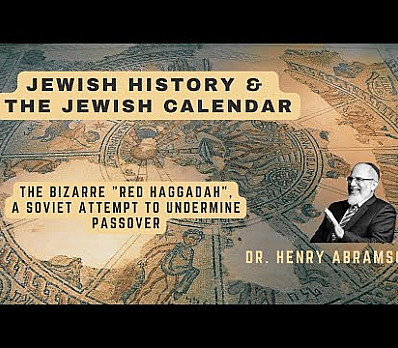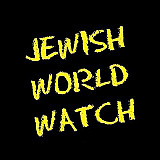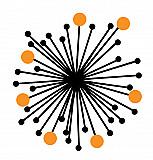Eating Meditation for Passover
Matza, or unleavened bread, is one of the staples of the Passover seder. But what can matza teach us? Use this extended meditation by Rabbi Jay Michaelson to explore how matza can instruct us in conscious, embodied living.
Jewish law requires that a surprisingly large amount of matzamaror, and matza/maror "sandwich" be eaten during the Passover seder. Most observance of this mitzvah falls into one of two categories: ignoring the legal requirements, or wolfing down huge sheets of unleavened bread in a mixture of piety and masochism.
I think that these size requirements, though, are really demanding that we eat enough matza and maror to notice it. Thus, I recommend turning the practice into an eating meditation.
Let's focus on the matza . You might begin with a contemplation of the matza itself, using the four worlds as a guiding map.
On the level of asiyah (action, materiality, body), feel the matza itself, its weight, the way it feels in your hand. Notice if any sensations arise in the body: salivation, perhaps. Then move to the level of yetzirah (formation, emotion, heart): notice what the large piece of matza evokes in your heart. Are you looking forward to eating it? Dreading it? Worrying about your digestion? Maybe you're remembering -- perhaps very subtly -- seders past, when you sat with your parents and schemed around the Afikoman. Maybe you're feeling, at this moment, some of the love, or trepidation, or confusion, of the seder where you are. Try to feel these emotions in the body, as events of the body, and see them for what they are: simultaneously evanescent and essential.
On the level of briyah (creation, thought, mind), I invite you to consider all that went into the production of this matza. How many people -- the farmers growing the grain, the bakers, the mashgiach (supervisor of the kosher status of the food), the truck drivers -- were involved in bringing it to your table? Think about the ingredients of the matza , along the lines of Thich Nhat Hanh's "Interbeing": the matza depends on wheat which depends on rain which depends on clouds. Without the cloud, there is no matza . Or, the matza depends on a baker whose life depends on a myriad of causes and coincidences. Let your mind expand the matza beyond the sheet in your hand, to as many causes in the universe as you care to imagine. Know that everything we hold, everything we see, is part of a web of life.
Finally, on the level of atzilut (emanation, spirit, soul), allow yourself to ask: if the matza is really just a node on this "web of life," what is it, really? What is "matza" about matza ? What is "you" about you? Everything we are, and everything we see, is really a cause or condition of something else, fleeting, empty of separateness, and unable to satisfy us on a permanent basis. Consider, too, the context of this matza -- its symbolism, and how the bread of slaves became the bread of freedom, due only to the context of its creation.
Okay, you can eat.
As you eat, work again through these four worlds. Notice the physical sensation of the matza in your mouth. Experiment with not swallowing anything that hasn't been thoroughly mashed up and liquified (this can take a while with matza ...), and see how that feels. Emotionally, do you feel connected? Resentful? Curious? Nostalgic? Try to call the mind back, when it wanders, to this moment, eating this food, as Jews have done for three thousand years.
On the intellectual level, consider the matza in the light of the four elements, which, while not scientifically descriptive of reality, do describe our experience remarkably well. Can you taste the earth-element in the matza? How about fire -- necessary to bake it, perhaps evinced by some burn marks, and also, in some systems of thought, necessary to digest it as well? Notice how your mouth releases water to help chew the dry food. And observe that, even in unleavened bread, there are small pockets of air. Really, our experience of the matza is really an experience of its constituent parts. There is never a moment at which we experience "matza" -- it's always an experience of an ingredient, which is itself actually an experience of particular chemical properties. On our phenomenal level, we experience matza . But if there really is an Infinite Being, who is eating and what is being eaten?
Sometimes we leap right into the historical, legal, and cultural aspects of the matza and maror. This is alright, but if you think about it, they're all on the intellectual plane, with only small tinges of the spiritual and emotional. What about our bodies, our hearts, and our souls? Eating matza is one of many embodied practices within the Jewish tradition; it connects us to the Earth and draws our attention to the cyclicality and the linearity of our lived experience. So I invite you to use mindfulness to enliven your seder, not by distraction, but by attention. Take as long as you need; the gefilte fish won't spoil, and neither will the salty egg. This act of eating connects you to generations of godwrestlers. If you pay enough attention to it, you might taste the Oneness they encountered all those years ago, one Egyptian night, rushing into freedom.
Inspired to create
your own Haggadah?
Make your own Haggadah and share with other Seder lovers around the world
Have an idea
for a clip?
People like you bring their creativity to Haggadot.com when they share their ideas in a clip
Support Us
with your donation
Help us build moments of meaning and connection through
home-based Jewish rituals.
OUR TOP CONTRIBUTORS
Passover Guide
Hosting your first Passover Seder? Not sure what food to serve? Curious to
know more about the holiday? Explore our Passover 101 Guide for answers
to all of your questions.






















